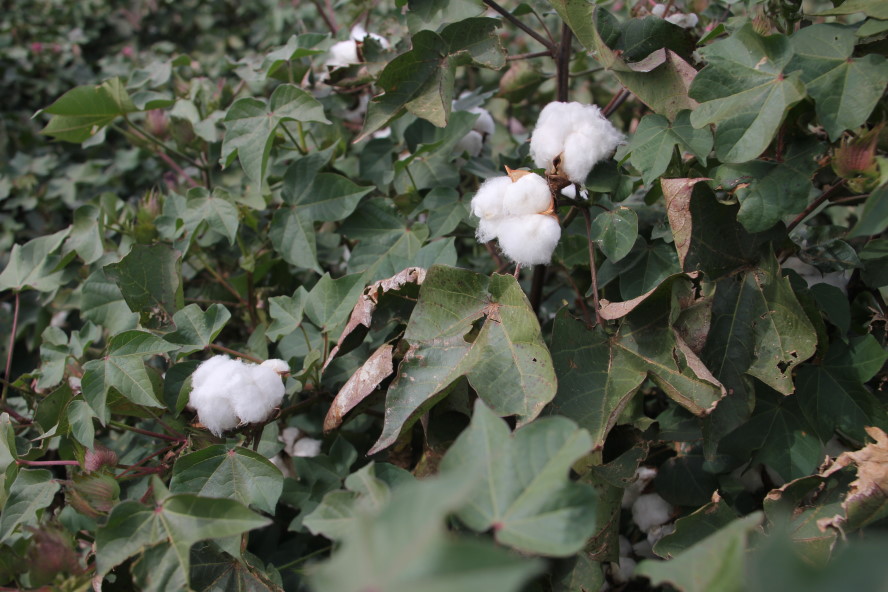
Agricultural News
How Controlling the Boll Weevil Has Changed Cotton Production in Oklahoma
Mon, 18 Oct 2010 5:55:55 CDT
 Ron Whittenberg, Canute, Ok., farmer, remembers when his cotton crop potential helped him decide on boll weevil control.
Ron Whittenberg, Canute, Ok., farmer, remembers when his cotton crop potential helped him decide on boll weevil control.
"If my crop was a good one," he said. "I would use an insecticide to kill the weevils. But if the crop didn't look too good, it was not profitable to try to control them."
That was back in the days when the boll weevil nearly killed the US cotton industry, particularly in those places where dryland cotton production depending on how much rainfall was received each season.
When the boll weevil eradication program began in Oklahoma, Whittenberg served on the first Oklahoma Boll Weevil Eradication Assn. elected board of directors. Today, with the end of boll weevil depredations in sight, he is still a member of the Oklahoma board.
Getting farmers who were already suffering money problems to agree to financially support the eradication effort required a lot of mediation and pursuasion, Whittenberg remembers. "We had some pretty spirited sessions," he said. "We perservered, however. Our board chairman, Jerry McKinley, was a good leader and kept everyone on target."
Today, Whittenberg has 300 acres of Rounup Ready variety cotton growing. A dryland farmer, he says some of the crop looks good while other places, receiving less rain, will yield less.
"Where the cotton is growing in creek bottom fields and there was sufficient rain, I think I will harvest some two bale cotton," he said.
Whittenberg gins at the Rocky, Ok., cooperative gin located at Dill City.
Normally a healthy, active person, Whittenberg is using a cane to walk today. June 7, 2010, a day Whittenberg says he will remember forever, a grain auger fell on him, knockng one hip out of place. He is slowing recuperating and may still require hip surgery, he says.
"That is one of the worst things that has ever happened to me," he said. "We were still planting cotton. If it hadn't been for my son and other family members helping me, I would have been in real trouble finishing planting."
Whittenberg's farming operation, located along I-40 in western Oklahoma, is a typical one where rainfall is very important for growing crops on a sandy loam soil. Along with his cotton, he plants wheat in rotation with the white crop. "Cotton will help clean up the weed problems we are seeing more of in wheat," he said. "Winter canola may be a crop I will plant in the future to have a money crop as well as more assistance in controlling weeds where winter wheat has been growing."
A herd of beef cows provides the other staple for Whittenberg's farming efforts, he said. "We have a herd of black commercial cows we keep on native pasture," he said.
Whittenberg and his wife, Connie, farm with their son, Stephen, and Whittenberg's father, Bob Whittenberg. As he looks across a field of maturing cotton, Whittenberg is proud he has been a part of the boll weevil eradication effort in Oklahoma.
"Back in the days when the boll weevil was a real problem, being able to harvest a good cotton crop was difficult, even when you had a good crop," he said. "Growing cotton today is much more profitable and predicatable today with the insect gone."
Our thanks to Vic Schoonover and the folks at NTOK for this spotlight on The Whittenberg family and the efforts in Oklahoma to get rid of the Boll Weevil. Click here for more on NTOK at their website.
WebReadyTM Powered by WireReady® NSI
Top Agricultural News
More Headlines...



















